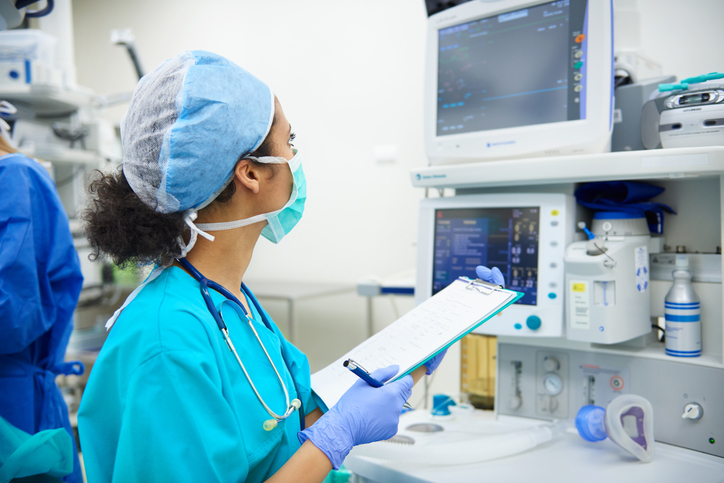About Waste Anesthesia Gas Monitoring
Also referred to as trace gas testing, waste anesthesia monitoring is conducted to maintain staff safety in operating rooms, recovery rooms, dental offices and veterinary clinics while meeting the standards set forth by the National Institute for Occupational Safety and Health (NIOSH), the Occupational Safety and Health Administration (OSHA), the Department of Health and Human Services (DHHS), The Joint Commission (TJC) and other regulatory agencies.
Health care facilities employ an anesthesia machine technician to perform preventative maintenance and repairs to prevent the gases and vapors from leaking into the room during surgeries and other procedures. Health care waste anesthesia gas testing should be performed by a reputable third-party firm like Evergreen Medical Services who is unbiased and not involved in the anesthesia machine maintenance. Our environmental monitoring services improve the health and safety of employees, ensure that OSHA regulations are met, and reduce the facility’s liability.
How Do Waste Anesthesia Gases Escape?
Waste gases can escape from the machine into the room through leaks in various components. Parts that are subject to leaks include the tank valves, high- and low-pressure connections, defective rubber or plastic tubing, hoses and ventilator bellows. Plus, leaks can occur due to simple human error. Leaving gas flow control valves open, keeping vaporizers on after use, spilling liquid anesthetics and placing poorly fitting face masks on patients can all cause waste anesthesia gases to escape the machine and enter the room.
What Gases Are Most Concerning and Why?
Exposure can cause nausea, dizziness, fatigue, irritability and headaches, and prolonged exposure can result in serious effects like liver and kidney disease, miscarriages, sterility and birth defects. Among the waste anesthetic gases we monitor regularly are nitrous oxide and halogenated vapors such as sevoflurane, isoflurane and desflurane.
How Evergreen Monitors Waste Anesthetic Gases
Health care waste anesthesia gas monitoring is accomplished through on-site instruments and/or passive dosimeter badges worn by employees. In addition to badges, we monitor the ambient air exposure of anesthetic agents to ensure that breathing levels are within regulatory standards. Plus, our medical waste anesthesia gas testing can identify the locations of high- and low-pressure anesthetic gas leaks and test the ventilation to further reduce employee exposure to these gases. Ventilation checks include air exchange rates, positive/negative pressure and nitrous oxide (N2O) recirculation.
Our expertise enables us to perform more than medical trace gas testing. Click here to view more chemical exposure monitoring services.

